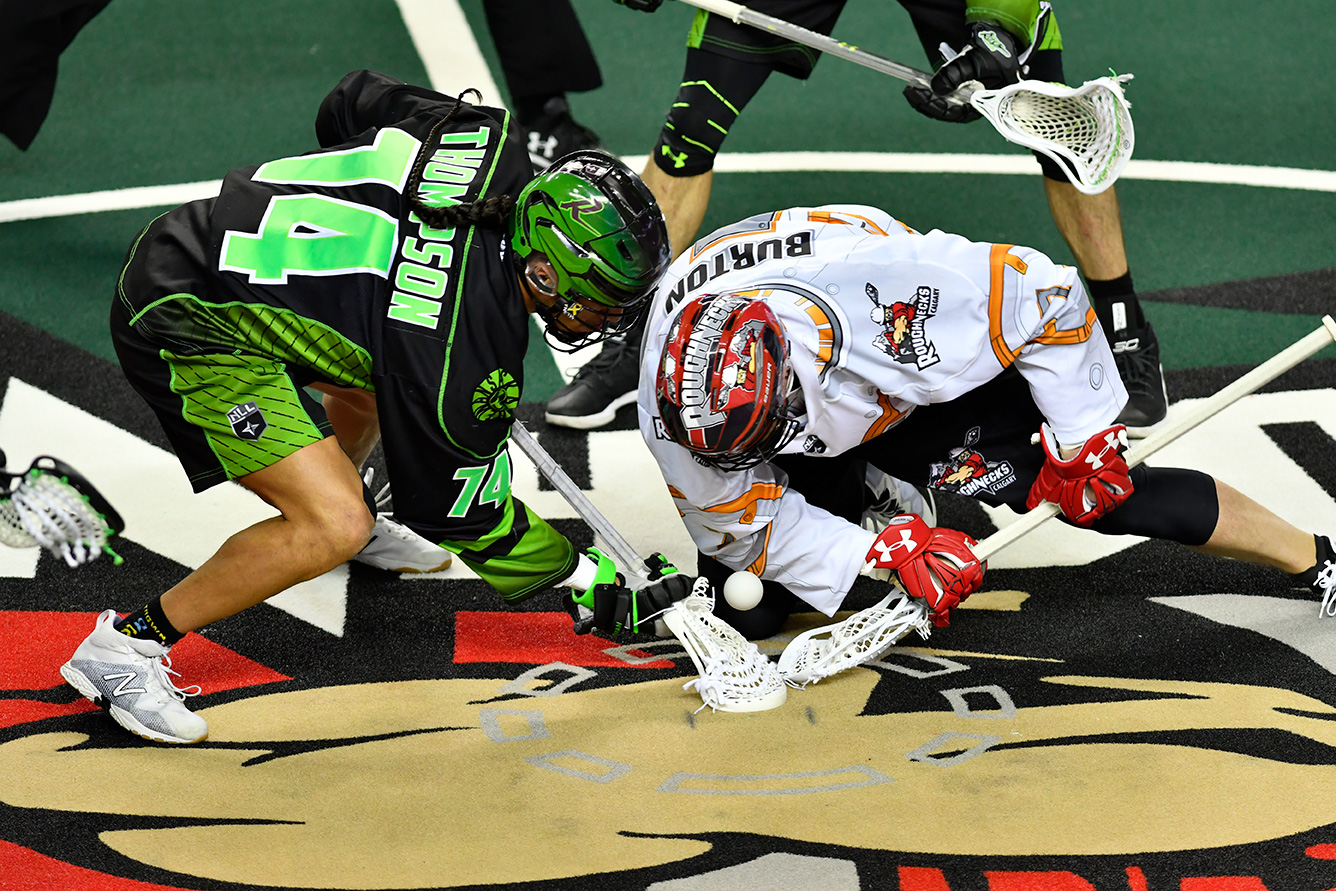
Last Saturday, April 7th, I took to Twitter to complain to NLL TV that there was an issue with the sound coming through the Colorado Mammoth/Saskatchewan Rush game. It seemed that every time a new song started, the volume would get loud, then fade out when the camera changed direction. After some tweets back and forth with other fans experiencing the same problem, and Graeme Perrow pointing out that the volume was being pumped when the Rush had the ball, not just when the camera moved, for me to realize that the Rush were playing more than just lacrosse.
This is called gamesmanship, folks, and if you haven’t heard the term, you’ve probably at least seen it in action. Gamesmanship is quite different from a more familiar term: sportsmanship.
Good sportsmanship, of course, is when you treat your teammates, opponents, fans and officials with respect. It’s not only respecting the people playing the game, but the game itself.
Gamesmanship is the polar opposite of that. A detailed explanation can be found here, but in short: gamesmanship is the use of dubious methods to give you or your team an advantage during competition. It’s the use of psychological tricks to interfere with your opponent. If you’re engaging in gamesmanship, you just might be a bad sport.
I think I first learned the difference during a sports management class at Durham College, and I’ve seen many examples in hockey and lacrosse before. But the first time I ran into using music as an advantage was in New Westminster in the 2017 Mann Cup when the Salmonbellies played live organ music whenever they were on offense. Nothing the crowd could recognize as a song, just loud, long notes intended to distract and disadvantage the defence.
To my knowledge, Canadian Lacrosse Association rules don’t allow for music to be played during gameplay. There’s nothing in the Rule & Situation Handbook about that, and if there’s another set of rules governing the off-floor/business side of the game, I don’t know about it. The NLL allows and encourages music to be played during the game, but there’s nothing in the rulebook regarding volume.
So what’s the problem with pumping the volume? It creates an unfair playing field. With the music pumped, the defensive team can’t talk to each other on the floor. With fluid game situations, watching video to research opponents’ tendencies doesn’t negate the need for clear communication between goaltender and defensemen.
It’s a calculated move. The home team knows to expect the music to go up so they won’t be taken by surprise. After all, the offense can’t talk to each other either over music that loud. Which means that it’s not just the whim of a part-time sound guy.
Here are some other examples of gamesmanship in lacrosse:
- Playing stereotypically “girly” music when the opposing team is warming up
- Encouraging fans to boo when the opposing team takes the floor
- Calling for a stick or equipment check on an opposing player at a critical moment in the game, or when that player is critical to his team’s success*
- Having an equipment manager tossed off the bench for an out-of-date certification*
- Faking an injury
- Intentionally giving your opponents a small locker room even if there’s a bigger one available
- Accusing your opponents of stealing your broadcast rights (gamesmanship isn’t always limited to on-floor play!)
I think the measuring stick should be whether the Creator would approve of it. Lacrosse may also be a business but first and foremost it was a gift, and it should be honoured with fair play. IroquoisNationals.org says that “Lacrosse should not be played for money, fame, or personal gain; you should be humble and of a good mind when you take your lacrosse stick in hand.” Creating an unfair playing field goes against everything the medicine game stands for.
Changing the music volume is not a common practice in the NLL as far as I know. Toronto doesn’t do it. Scott Loffler confirmed that Buffalo does not. Stephen Stamp from ILIndoor.com confirmed that Rochester does not. Fans from Colorado chimed in and said that their team doesn’t, either.
Don’t call it home-floor advantage. Being in your own barn with your own fans cheering for you is home-floor advantage. Pumping up the music to affect the flow of the game is gamesmanship.
To be fair to Saskatchewan, I’ve never heard them do this before. Maybe it’s a common practice, but it’s never come across the NLL TV broadcast like it did this that weekend. Hopefully it was just something they tried once because it was a close division game and they wanted their fans to be as engaged as possible. Hopefully they don’t do it again.
Gamesmanship can be fun. Some things can add to the experience for the fans and players. Booing when the opponent hits the floor is a tradition at the Air Canada Centre.
But here’s the bottom line: if the tactics affect the on-floor product, gamesmanship has gone too far. When you don’t let your players’ talent speak for itself, you’ve crossed a line. It says that you don’t trust that your players can win without some extra help. It says that you’re taking the spirit of the game for granted.
*There are actually rules regarding these tactics but the problem is inconsistent enforcement. Teams use them to their advantage when it’s convenient, not as general rules.
Update:
The league considers such an inconsistency in audio volume to be a competitive imbalance and implementation of this practice may result in discipline. 2/2.
— Brad Challoner (@bradchall) April 13, 2018

